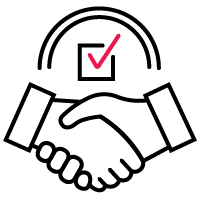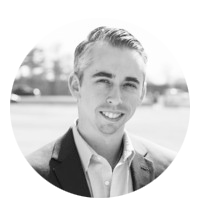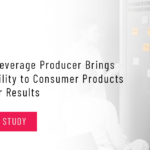Headquartered in London and Newark, NJ, with subsidiaries and offices in over 40 countries in…
Case Study
Agile Transformation under Regulation: Reducing Development Cycles in Big Pharma with Cprime
Company Details
Industry: Pharmaceutical
Company Size: 90,000 Employees
Location: UK
Products: Pharmaceutical and Consumer Health Products
Cprime Services:
Executive Summary
In a highly controlled industry with glacial development cycles, the company sought to align its process and make incremental improvements across R&D Tech. The goal was to implement agile methods into highly regulated ways of working. With the help of Cprime Agile and SAFe experts, over 1500 team members were trained in the midst of a significant Agile transformation, resulting in improved productivity and alignment.

Overview
This Cprime client is among the top ten providers in the pharmaceutical industry. With hundreds of familiar brands under its umbrella, it is as active in the consumer healthcare sector as in pharmaceutical manufacturing and development.
The company has research and development facilities on every continent and reported a 2020 annual revenue of $43.7 billion. With 16,000 employees engaged in pharmaceutical, vaccine, and consumer healthcare research and development, it serves 96 international markets. It employs nearly 100,000 people worldwide with UK headquarters that host a staff of over 10,000.
The Problem: Reducing Development Cycles and Improving Visibility
Pharmaceuticals are big business; that much is obvious. Less apparent, however, is the complexity of the pharmaceutical sector and the number of processes, departments, and people involved. Even more significant are the time frames. “Things take forever in the pharma industry, whether it’s getting new medications or vaccines out, going through trials, or getting the right data,” explains Brian Segel, Cprime Delivery Director. “The fact is, things can take upwards of a decade to go from idea to market. Then there are all the regulatory and compliance considerations.”
Going agile in the face of heavy regulation
In a highly controlled industry with glacial cycle times, the company sought to align its process and make incremental improvements across critical departments. The goal was to implement agile processes into highly regulated ways of working. “No process here is external from regulation. Everything is GxP—over 90% of the work involves FDA and EMA oversight,” says Adam Mitchell, Principal Consultant, Cprime.
Segel adds, “While working within those restrictions, they wanted to know how to shorten the time between discovering something and getting it to the public—how to improve their development value streams to reduce waste in their operational value streams.”
A quest for effective oversight
The pharmaceutical manufacturer’s executives had additional goals. “The company lacked a framework to ensure effective oversight,” says Mitchell. “It wanted to give its stakeholders better control of their portfolios. It wanted empirical data, metrics it could use to create effective roadmaps while decentralizing decision making and applying systems thinking.”
The Solution: Cprime, a SAFe Decision

Modest beginnings
At the outset, it was a loose engagement with modest expectations. “We had to come in fresh and start from the bottom up,” says Segel. “Initially, one of our corporate sponsors wanted to bring a coach and some scrum masters into a single area and see if agile helped address the slow movement of processes across pharma.”
Given the organization’s size, the Cprime team determined that incremental improvements were the way forward. “There wasn’t a structured scope of work. We worked for transformation, identifying new areas where we could provide coaching and help them be more effective with their programs and running agile,” says Segel.
The scope grows
The team worked with the company to shape its roadmap and coach its teams and programs for nine months. “Word started to spread; people heard good things about what we were doing, and that led to another program,” says Segel. “From there, it snowballed. We continued identifying new areas where we could add value, and that led to another four coaches over the next two years.”
“Now we have a mixture of agile coaches, product coaches, scrum masters, and portfolio coaches on site—the best trainers Cprime has,” adds Scott Seivwright, Cprime Agile Coach.
An agile buffet
Continually adapting, Cprime facilitated multiple transformations as the company’s needs evolved. “We didn’t just offer scrum master courses. We got into DevOps, Agile Program Management (APM), and Lean Portfolio Management—difficult, top-shelf SAFe classes where we took deep dives into specific real-world problems,” says Mitchell. “With the backing of our executive sponsors, we were clear when the course ended on Friday that on Monday we expected attendees back in their programs with a list of improvements. The SVP, who attended the training, really helped us connect the dots.”
Maintaining a solid footing in a complex ecosystem
This project brought a unique set of challenges for the Cprime team due to the pharmaceutical manufacturer’s low ratio of core tech employees to contracted suppliers.
“The company outsources 95% of its tech, so we were strategic partners with two industry leaders in the technology and operations strategy as well as the IT consultancy spaces. Our teams focused on the difficult, unstructured areas. We built in structure and agility, passed it on to our strategic partners, and moved on to the next hard problem. When we were done, everyone could see we provided tangible value. It built our reputation, and we used that social capital to drive our programs.”
— Adam Mitchell, Cprime Principal Consultant
Results: Incremental Improvements with Broad Implications
While a single change is a drop in the ocean, the advantages of incremental improvement are massive at scale. “It’s a daisy chain—thirty or fifty or more portfolios and projects end-to-end,” explains Mitchell. “We applied systems thinking to shrink down the cycles. Everyone shortened their little bit. Within the purview of an R&D tech division with 2,500 staff and a $200 million budget, any improvement saves the company a lot of money, even if it’s a small percentage. There are many broad implications to the work we have done, from how teams deal with regulations to how they approach user acceptance testing.”
Equipped for performance
The Cprime team’s consistent, highly focused training efforts helped put the company on a new course. “We’ve given them tools like agile release trains or portfolio support and supplied them with the skills to tackle issues with value streams,” says Seivwright. “We involved everyone from the director down. That includes their horizontal as well as vertical delivery teams. R&D Tech has about 2,500 core company employees, and we trained 60% of them. We issued around 300 certificates. More importantly, they all use the same framework, whether at the product, portfolio, or team level. It’s all been about speeding things up. The departments are much more customer-focused, understand the ideas behind product in an agile sense, and they keep moving forward.”
Fostering collective accountability
In addition to the structural and process changes, communication has improved within the organization. Implementing Communities of Practice, Cprime fostered more rapid problem-solving, improved quality and cooperation across domains, and incubated a sense of shared responsibility. “Within these communities, all the suppliers, strategic partners, and company employees could finally have difficult conversations safely,” Seivwright explains. The changes made the organization’s complex supplier/employee topography easier for everyone to navigate, resulting in further efficiency.
Bringing the bottom line into focus
Finally, the executive-level sponsors are on a quarterly cadence toward greater transparency and predictability in operations. “With the Release Time Engineering framework, management has real-time data of how complete their projects are, down to half a percent,” says Mitchell. “From there, they can extrapolate when they’re likely to finish.”
A Partnership Based in Trust

As for the future, “The company has seen the holistic solution and understands the connectivity its agile teams need to work with. The next step is to help them align and collaborate across different areas and with different metrics and tooling to get that transparency going forward,” concludes Segel.
Interested in similar results for your organization? Explore our flexible Scaled Agile and Agile transformation solutions.
About Cprime
Cprime is an industry-leading, full-service global consulting firm with a focus on providing integrated and innovative solutions around digital transformation, product, cloud, and technology. With over 20 years’ experience, we provide strategic and technical expertise to businesses across more than 50 industries. Our team of advisors and technical experts have the know-how to meet organizations where they are to develop actionable solutions and solve business challenges. We also collaborate with our expansive network of partners to design, deploy, and harmonize technology stacks across organizations. Our mission is to empower visionary business leaders and teams to reimagine the future of work to achieve better outcomes.
Want to share with a colleague? Download the PDFFeatured Team Members

Brian Mitchell
Principal Consultant
Adam is a SAFe Consultant and Trainer with extensive experience. He has spent the last decade traveling all around the globe helping companies in various industries transform how they deliver value to their customers. Adam is passionate about the empowerment and the freedom that a well-implemented transformation brings to an enterprise and believes that happy, well motivated staff are the key to successful business agility.

Brian Segel
Delivery Director
Brian is an experienced transformation leader with a demonstrated history of working in a variety of industries both commercial and federal. He is skilled in Agile/Lean practices and principles (including SAFe, Scrum, Kanban, etc.), Project Management, and Business Process Improvement. He has an MBA in Strategy and Finance from the University of North Carolina at Chapel Hill.

Scott Seivwright
Agile Coach
Scott is an Agile Coach based in Scotland. He has many years of supporting and growing agile with large client organizations and has extensive experience of delivering Agile Ways of Working in difficult situations. Scott works with clients to create plans and engagement models to increase focus on delighting customers and creating greater value quicker. He helps build trust between business, technology teams and customers and has supported the creation of digital apps, departmental transformation, improved flow of work, increased automation and DevOps.

